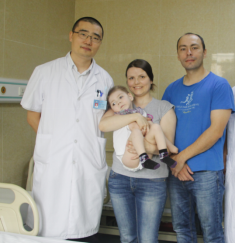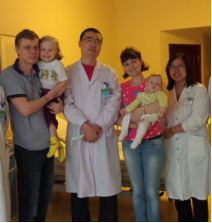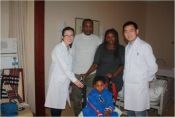Cerebral palsy is a group of persistent motor and postural development disorders caused by non-progressive brain injury occurring during the fetal or early infantile period. As one of the most common central nervous system injuries, cerebral palsy primarily manifests as motor dysfunction, abnormal muscle tone, and impaired postural control. It is often accompanied by sensory, cognitive, communicative, and behavioral abnormalities. The underlying brain injury may result from prenatal hypoxia, premature birth, intracranial hemorrhage, infection, or genetic metabolic abnormalities, with pathological features including neuronal damage or developmental anomalies in the motor cortex, basal ganglia, or cerebellum. Due to impairments in motor coordination and neural regulation, patients experience significant challenges in daily living, social participation, and overall quality of life.
Stem cell therapy for cerebral palsy represents an innovative treatment modality based on neural regeneration and functional remodeling. By leveraging the proliferative, differentiative, and microenvironment-modulating properties of stem cells, this therapy targets the repair of damaged brain tissue. The following outlines the treatment principles and clinical benefits in detail:
Neural stem cells and mesenchymal stem cells possess the ability to differentiate into neurons, astrocytes, and oligodendrocytes. This enables them to replace necrotic cells in the injured area, rebuild neural networks, and promote the recovery of both motor and cognitive functions.
Stem cells secrete neurotrophic factors such as brain-derived neurotrophic factor (BDNF) and glial cell-derived neurotrophic factor (GDNF), which support neuronal survival and axonal regeneration. They also improve cerebral microcirculation, thereby providing essential nutritional support for neural repair.
Excessive neuroinflammation following brain injury can exacerbate secondary damage. Mesenchymal stem cells mitigate this by inhibiting microglial activation and reducing the secretion of pro-inflammatory cytokines, such as TNF-α and IL-6, thus protecting the residual neural tissue.
Through paracrine secretion of vascular endothelial growth factor (VEGF), stem cells promote angiogenesis in ischemic regions, enhancing blood supply and energy metabolism, which helps alleviate hypoxic injury.
In 2003, we completed China’s first stem cell treatment for cerebral palsy, becoming a true industry trailblazer. Since then, we’ve treated patients ranging in age from as young as 3 months to 38 years old. With deep clinical experience, we’ve overcome age-specific challenges and provided effective, tailored care to support recovery at every stage of life.
We have successfully treated over 10,000 patients with no reported adverse reactions. This track record is made possible by advanced therapeutic techniques, strict quality control measures, and a highly specialized medical team—offering patients and their families a safe, trusted environment for treatment.
Our achievements in the field of cerebral palsy have gained national media attention, earning recognition from top-tier outlets in China. This acknowledgment not only affirms our professional capabilities but also highlights the strong reputation we’ve built across society.
We offer a diverse range of cell administration methods—including intravenous infusion, cranial targeting, lumbar puncture, intranasal drops, and acupoint injections. Based on each patient’s condition and physical status, we carefully select the most suitable approach to ensure precise targeting and optimal treatment outcomes.
We extract autologous bone marrow cells and apply proprietary culture techniques to enhance their therapeutic potential before reintroducing them into the body. This method significantly boosts treatment effectiveness and accelerates the patient’s healing process.
Holistic Rehabilitation to Improve Quality of Life Our approach goes beyond addressing neurological symptoms—we also emphasize motor development, cognitive improvement, and overall functional recovery. By supporting full-spectrum rehabilitation, we help patients lead more independent, fulfilling lives.
Since 2003, Our medical team has successfully performed over 10000 cases of stem cell therapy for cerebral palsy, covering the following types:
Characterized primarily by pyramidal tract injury, this type manifests as increased muscle tone and hyperactive tendon reflexes.
Resulting from basal ganglia injury, it presents with involuntary movements and abnormal postures.
Caused by cerebellar damage, this type leads to difficulties with balance and coordination.
Involving multiple regions, this form exhibits a combination of the aforementioned symptoms.
In 2015, our team was the first to adopt stereotactic intracerebral stem cell transplantation technology, significantly enhancing motor function and cognitive abilities. In 2020, we introduced an AI-assisted rehabilitation assessment system to enable dynamic optimization of treatment plans.
We have years of experience and outstanding achievements in the field of Cerebral Palsy treatment. While providing precise neurological repair therapies, we also emphasize multidisciplinary collaboration and personalized rehabilitation plans. Our goal is to help patients improve their functional abilities, enhance independence, and offer comprehensive psychological and social support for their families.







